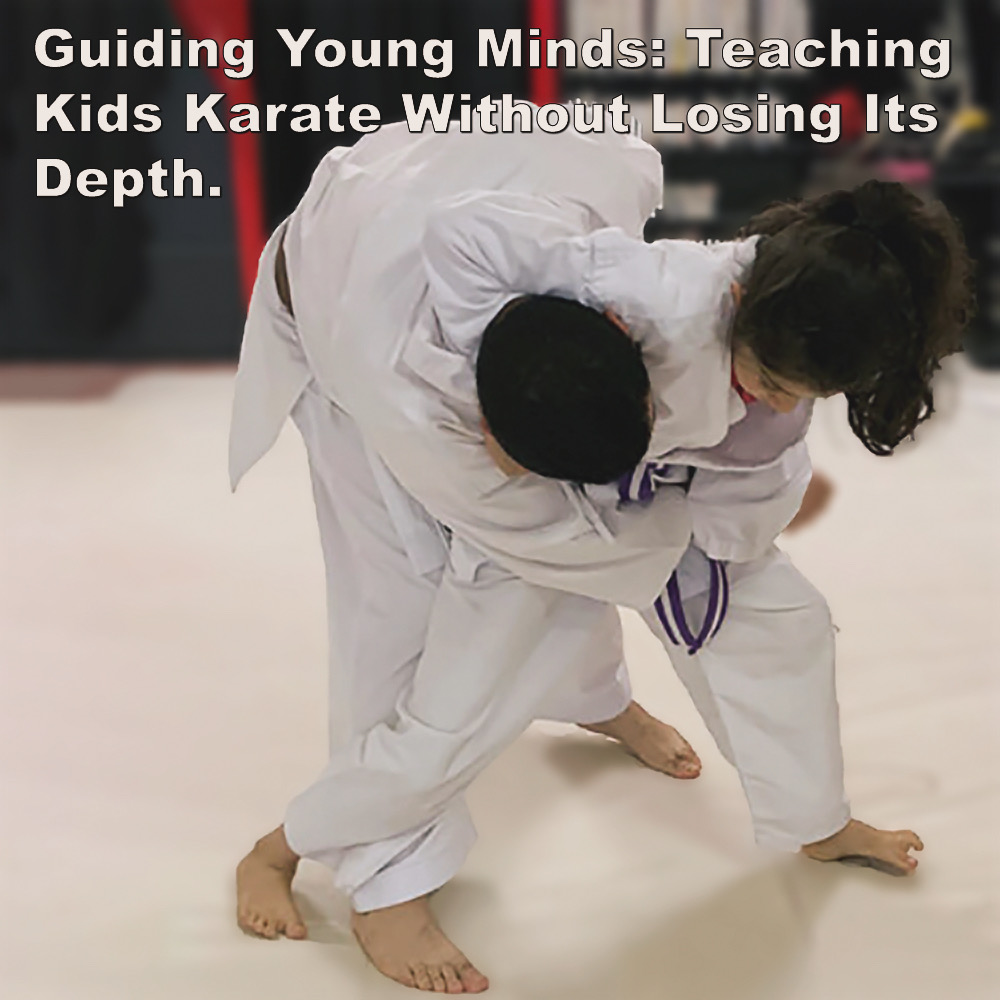
(Approx 2 minute 20 second read)
A comment on my recent article stated “Trying to encourage a young student (say 7-10 year old) to embrace the multiple options for jodan age uke as a starting point is simply impractical. Surely it is better to focus on getting the technique correct from the feet up (on their own and over time with partner drills) before filling the mind with the multiple potential application options.”
.
A great comment that made interesting points.
.
In most karate dojo today, the majority of students are children. This raises an important question: how do we keep them engaged while ensuring they receive proper instruction?
.
Every student trains at their own pace, but at some point in their development, they should be encouraged to challenge basic techniques and explore how they apply in real-world situations.
.
But with young students, this has to be done in a way that makes sense for their level. Take jodan age uke, for example, something I wrote about recently. For a more experienced practitioner, it’s not just a block – it can be used as a strike, a setup for a throw, or way to release a grab, and much more. But trying to explain all of that to a seven-year-old would be overwhelming.
.
Now this is important.
.
That doesn’t mean techniques should just be drilled mindlessly. Even at the earliest stages, students should have some understanding that what they’re doing has a purpose.
.
It doesn’t require bombarding them with every possible application, but they should know that a block isn’t just a block (it isn’t), a punch isn’t just a punch (it isn’t). That way, as they progress, they don’t have to unlearn rigid thinking but instead develop an adaptable mindset from the start.
.
Retraining a movement is always more difficult than learning it correctly from the start. That’s why it’s so important to go beyond just repetition.
.
When students begin to understand that techniques are rooted in principles rather than isolated techniques, training becomes more engaging and meaningful.
.
The realization that a familiar technique has layers of depth to it can ignite enthusiasm rather than make things more complicated.
.
Of course, modern karate has changed from what it once was. Most of what we see today is based on ‘school karate’, where the focus shifted toward physical education rather than practical combat.
.
Getting the right balance is key – keeping young students engaged without watering down the art, while also guiding everyone toward deeper understanding at a pace that suits them.
.
At its core, karate was never meant to be just a collection of techniques. It’s about movement, strategy, and adaptability. If we teach with that in mind, rather than simply drilling by repetition, we give students something far more valuable than just the ability to perform a technique – we give them the ability to think, to explore, and to truly understand what they’re doing.
.
If practice isn’t accompanied by understanding, there’s a high chance that key elements of any technique will be missed. When that happens, those mistakes get ingrained into muscle memory, making them much harder to correct later.
.
When students, of whatever age, understand what they’re doing and why, they’re not just going through the motions – they’re building a solid foundation that will serve them for years to come.
.
.
Written by Adam Carter
.
.
Photo Credit: Two young students at the Shuri Dojo practicing throws.
